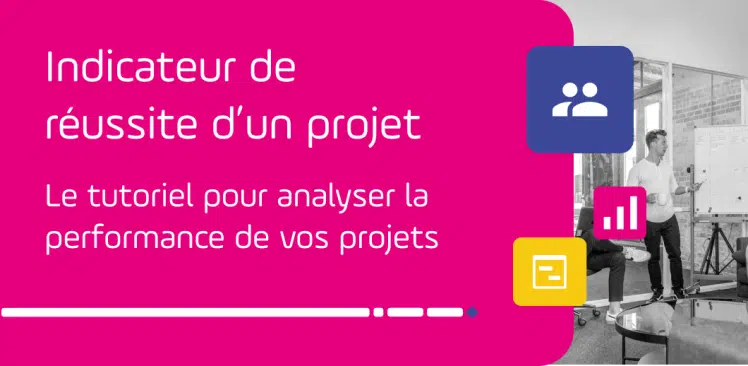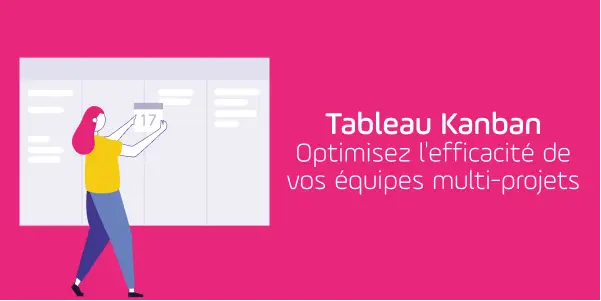How to analyze project risks: tips for an effective project risk analysis
In this article, we give you the best practices in risk management for your projects:
- examples of typical project management risks,
- tools to anticipate and remedy risks,
- steps in a risk analysis and management process,
- a zoom on Project Monitor software to help you with risk analysis.
Would you like a clearer picture of the processes you need to put in place to anticipate project risks? And what tools are available to help you?
By anticipating and identifying risks from the outset, project teams are better prepared to take preventive measures.
This helps anticipate disruptions in overall project management.
So, right from the outset, thinking about risk is a fundamental element in ensuring the success of a project.
The ability to identify, assess and manage risks is crucial to the success of a project. The use of software is recommended to simplify these processes, offering a comprehensive toolbox and increased risk visibility for all stakeholders.
Take a look at Project Monitor, for example, to manage your risks, schedules, budgets and resources.
What is risk in project management?
A risk assesses the probability and impact of internal or external events that could influence the progress of a project.
In project management, various risks can arise.
They can be of a temporal, financial, human or material nature.
A risk is a circumstance likely to have an adverse influence on the project.
It consists of 5 elements:
- A wording
- One kind
- A degree of severity
- A degree of probability
- A degree of criticality
Here are a few examples of typical project management risks
- Schedule risks: These are risks that can lead to slippage on the schedule website, and consequently push back the project completion date. Risk factors can be multiple, such as delays in the delivery of materials, human resources problems or actions that take longer than expected.
- Financial risks: These are risks that have an impact on the project budget. For example, an increase in the cost of energy or raw materials, or unforeseen expenses.
- Technical risks: These relate to the technical challenges of the project. You may encounter problems with the technology chosen for the project, or discover that the planned solution is not technically feasible.
- Resource-related risks: These concern potential problems with the resources needed for the project, whether personnel, materials or any other type of resource. For example, a key team member may leave the project, or an essential material resource may not be available.
Example of risk management with the different elements :

How to anticipate and remedy project risks?
Deadlines: potential project deviations that could delay the project. schedule
Potential deviations within a project represent considerable sources of risk that could delay the schedule project. These drifts can arise from a variety of sources, such as unexpected changes in project requirements, delays in the delivery of essential resources, unforeseen technical difficulties, or coordination problems within the team. Deviations can also result from underestimating the effort required for certain tasks, or failing to anticipate potential obstacles. These unforeseen events can lead to a cascade of delays, affecting the logical sequence of project activities. In order to reduce these risks, it is essential to adopt a proactive approach by identifying at an early stage the factors likely to cause deviations, as well as defining the schedule delivery target.
💡 How can we help you stick to schedule ? You can create a project schedule, in the form of a Gantt chart. This allows you to forecast project phases, milestones and drifts.
Budgets: the financial risks that can affect the successful completion of projects
Companies are often faced with the challenge of juggling project management and budget control. Project managers often lack the necessary tools to effectively assume the role of management controller, sometimes resulting in delays, budget overruns and inefficient resource allocation. This can have a significant impact on project profitability. Costs can quickly exceed planned budgets, resulting in late deliveries, inefficient use of resources and dissatisfied stakeholders.
💡 How can you integrate financial management into your projects? With Project Monitor, get a complete solution for project budget tracking:
- Integrate budget management
- Simplify financial monitoring
- Automate financial reporting
Resources: insufficient team availability and skills
Resources play a crucial role in the success of a project, and insufficient availability and skills within teams can represent a major challenge. When human resources are not available in adequate quantities or do not possess the necessary skills, this can lead to substantial delays in task completion. Overloaded teams can see their productivity drop, compromising the quality of the work delivered. What's more, the absence of specific skills can lead to costly mistakes and frequent revisions of the work carried out. To anticipate and mitigate this risk, it is essential to carry out a thorough assessment of resource requirements right from the start of the project. Careful planning of resource allocation, training and development of the necessary skills, and putting in place replacement mechanisms in the event of unavailability are important strategies for preventing the negative impacts of these resource-related challenges.
💡 How to avoid spreading resources too thinly? The best way to manage resources effectively is to create a capacity schedule to manage resources. Thanks to this tool, resources are used as effectively as possible according to their availability and know-how.
How to carry out a project risk analysis?
To properly analyze your project risks, follow these steps:
- Identify and list all the risks likely to impact your project,
- Assess the criticality of risks,
- Develop appropriate action plans for each risk,
- Monitor and control risks.
Steps to manage your risks within the software Project Monitor
The Project Monitor software provides you with key functions for defining and monitoring your risks:
- Identify events in the software that could affect project objectives,
- Specify the severity (very high, medium, low...) and probability (high, very low...) of the risk: criticality and risk cockpits are updated automatically,
- Add tasks to your risk treatment plan,
- Quickly visualize projects with critical risks.
Assigning a risk under Project Monitor
- Access the project
- Access the project risk summary
- Click on the Assign button
- Select one or more project phases (only if the risk category has been set accordingly)
- Select risk category (if several categories exist)
- Assign a risk from the risk library
- OR Assign a local risk that will be created specifically for this project
- Register


Discover Project Monitor to manage your project portfolio and track their progress.
Would you like to see the tool? Request a demo. You'll get an overview of the main features:
- Risk management
- Resource management
- Planning
- Dashboard creation
- Financial follow-up
Bornes Solution : How can I analyze project KPIs for my management?
- How to analyze deliverability and project performance KPIs
- Key tips for successfully implementing the PPM approach - Portfolio Management
- Set up processes that evolve according to a series of stages

Find out how to analyze and improve the performance of your projects today! Here's a step-by-step guide to help you identify your project success indicators
